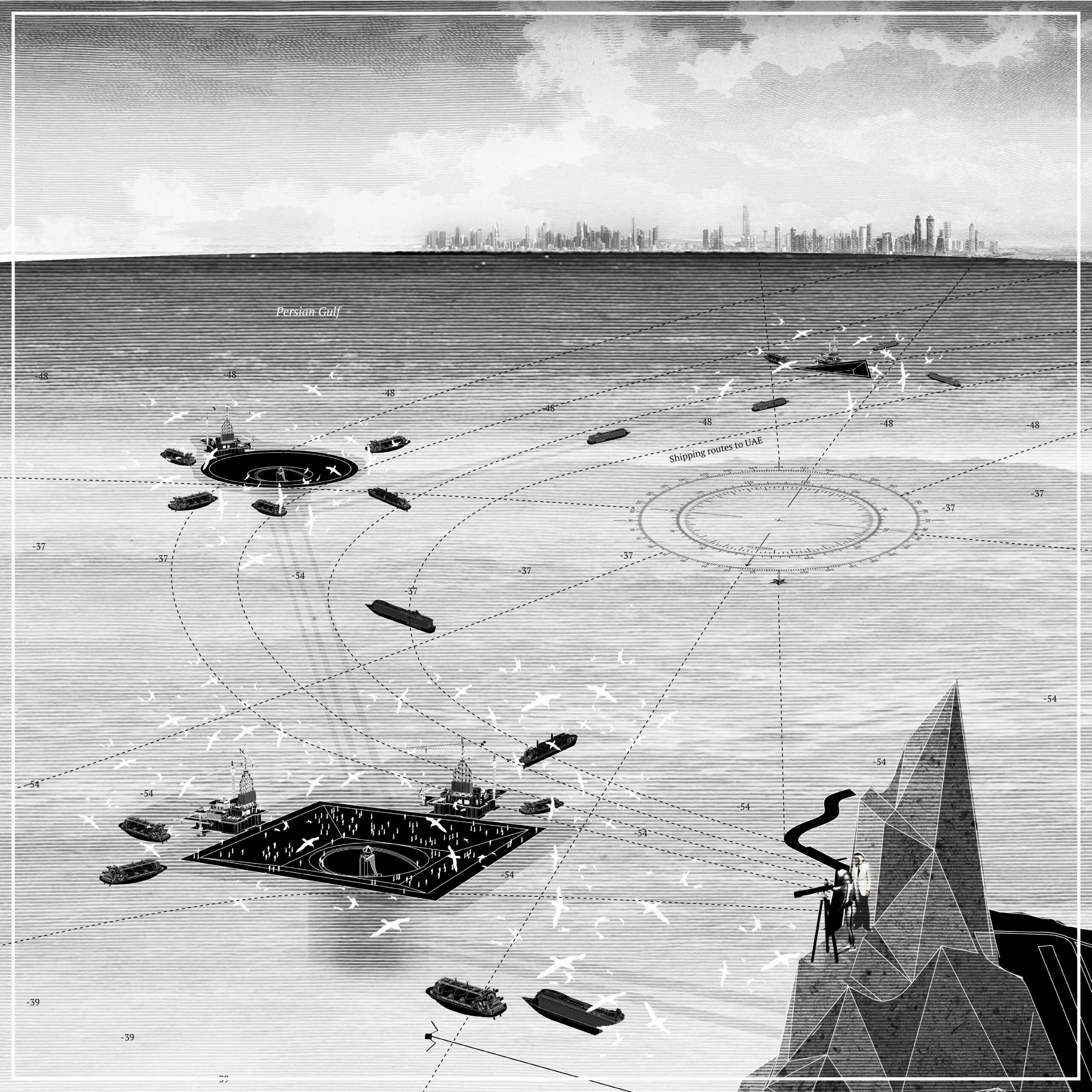
After Oil (Das Island/Das Crude) by DESIGN EARTH
The image is part of the “After Oil” series, first exhibited in 2016, by DESIGN EARTH: a research project founded by architects Rania Ghosn and El Hadi Jazairy to explore the climate crisis through speculative architecture.
The series itself speculates on the geography of the Gulf in a future after oil. But it equally attends to the present landscape of production, transit and consumption—as oil powers cities and destroys ecosystems. In the words of the artists, the images “stage and extrapolate critical issues of today’s oil landscape to make the public aware of the energy systems on which modern life is dependent and the long-term consequences of current fossil fuel regime.”[1]
The current MER issue, like the “After Oil,” series, explores how the discourses and technologies emerging around a post-fossil future are in reality deeply embedded within the existing landscapes of fossil fuel extraction. The long-term effects of the fossil-driven climate crisis necessitate the use and dependence on more energy for humans to live comfortably—as Marwa Koheji shows in her article on the history and cost of air-conditioned comfort in Bahrain. As contributions by Ben Scheutze and Adam Hanieh argue, the industries of decarbonization are poised to reproduce rather than subvert existing hierarchies and prolong the extraction of oil. And as Natalie Koch poignantly illustrates, the use of fossil-fuel wealth to invest in solar and hydrogen technologies in the Gulf are a spectacular fiction that will not solve the climate crisis. There is nothing post about our post-fossil future.
The particular image chosen for the cover focuses on points of transit and extraction, recalling, for the editors, the inevitable role of these sites in shaping the geopolitics of decarbonization but equally their potential as sites of disruption. Das Island is an Emirati offshore industrial oil and gas facility that has helped fuel the urbanization of Abu Dhabi. The image foregrounds surveying and extraction, with cartographic routes of transit receding toward a distant cityscape. As Ghosn has said, “We will always imagine that there is possibly a faraway, distant, remote, uninhabited place that can still bear the costs of urbanization, while the city can only reap the most beautiful rewards. It’s precisely that that After Oil wants to counteract. It wants us to reflect critically on the time and space that we occupy now.”[2]
Read the first article in MER issue 311 “Post-Fossil Politics.”
Endnotes
[1] “After Oil,” DESIGN EARTH website, 2016.
[2] Rania Ghosn, “Audio about After Oil (Das Island, Das Crude),” MoMA.
